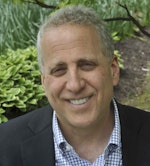The fee-for-service practice: How to find your true happiness in dentistry
Are you happy in dentistry? Ask yourself these questions:
- Do you enjoy going to work each day?
- Are you happy with your take-home salary?
- Are you proud of the level of dentistry you're able to present and produce for your patients?
- Does your dental office reflect your values?
If you did not answer “yes” to all these questions, you might want to rethink where you work and what your ideal office environment looks like. For me, it’s been an evolution from various forms of dissatisfaction to working toward a solid yes for all four questions. My intention has always been to be a solo fee-for-service practitioner who creates long-lasting relationships and the highest-level dentistry possible.
There are many different practice models and just as many different types of dentists; the challenge is to match your personality with your optimal practice model. I’m writing this to highlight the tremendous advantages a fee-for-service office can provide you, as well as to discuss the downsides and pitfalls.
As to why I wanted to write this column, I’ve been in practice for close to 40 years. After dental school I did a one-year general practice residence and then associated with five different dental offices simultaneously. I would be in one office in the morning for three to four hours, then run to another office in the afternoon, and sometimes a third office in the evening. It was a great way to be efficient, I didn’t spin my wheels for too long in any one office, and it showed me the many different ways offices operated.
You might also be interested in: Is fee-for-service for you?
The move to private practice
After a year of this, my family dentist offered me the opportunity to buy his practice when he retired. This was in 1985 and he was still practicing wet fingered, stand-up, two-handed dentistry with no assistant or hygienist. There was no transition. He was out one day, and I was in the next: a veritable trial by fire. Although the transition was very challenging, I had two things going for me: the retiring dentist had very loyal patients, and he never participated with any insurance companies.
It wasn’t long before I was receiving solicitations from managed care companies asking me to join. I had a little experience with PPOs and HMOs from my associateships. What I witnessed was some of the offices constantly trying to get around the contract fees in order to do the dentistry they wanted to do, and the dentistry that would be best for the patients.
The phrase from patients, “I only want to do what my insurance company will pay for” left a big impression on me. I knew I didn’t want to start my practice having to play these games, not to mention that it never made any sense to me to work harder and see more patients for the same amount of money that I could make seeing fewer fee-for-service patients.
Only a year or two after I took over the practice, I realized that dental school had inadequately prepared me for doing much more than an individual crown or filling. I was ill prepared to run a business. So, for at least 10 years, I practiced the “what’s left over” form of practice management. It goes like this: at the end of the month, I opened all my bills and paid them with the money I’d collected that month.
When it came to my personal bills, I used whatever was left. Many months there was not enough left over to pay my personal bills and set money aside for estimated taxes, let alone contribute to a retirement plan. This is a very poor way to run a business, but it’s all too common. It leads to daily stress and can eventually color the way you present treatment because patients can tell when you’re desperate to do the work.
4 keys to a successful FFS practice
Fortunately, I stumbled on the four keys to a successful fee-for-service practice. These keys are:
- a very thorough budget and goal-setting system
- a rigorous CE regimen so you can provide the highest level of dentistry possible
- a superstar staff that reflects your office philosophy
- a sincere interest in creating and enhancing relationships with your patients
Creating relationships with patients was an innate talent of mine, but the other three keys I learned from others. I found an amazing consultant to help me learn and strengthen my business skills. As for CE, I’ve been continually inspired and motivated by people such as Peter Dawson, the Pankey Institute, and for the past 20 years, Frank Spear.
I can't overstate how much these concepts changed my life and increased my enjoyment of dentistry. I’ve been able to enjoy a very comfortable lifestyle, fund my retirement, develop the staff of my dreams, and continue to improve the level of dentistry that I can provide, all while working 30 hours a week and all fee-for-service.
Sound too good to be true? Follow along with me in future articles as I focus on each of the aspects that are crucial to success in a fee-for-service business model. If you’ve ever wondered if it’s possible to create a practice like this in these times, stayed tuned. I promise it will be worth your time!
Editor's note: This article appeared in the January 2024 print edition of Dental Economics magazine. Dentists in North America are eligible for a complimentary print subscription. Sign up here.
Robert Minch, DDS, is a graduate of University of Maryland Dental School and has enjoyed a fee-for-service practice in Baltimore, Maryland, for 39 years focusing on cosmetic and complete dentistry. He is a visiting faculty member at Spear Education and teaches Dental GPR residents at Johns Hopkins Hospital. Additionally, he has put together and created numerous study clubs. He can be reached at [email protected].







